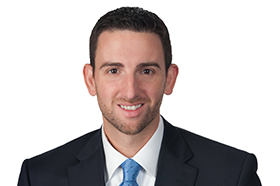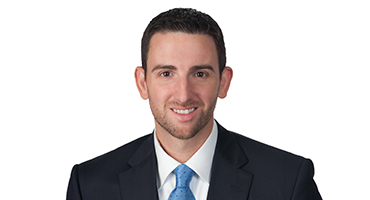Often underused, tax functions can have a big impact
In ideal business scenarios, tax leaders play pivotal roles in strategic decisions for the organization.
Empowered tax functions do much more than prepare statutory tax and regulatory filings. When the company is launching new products, expanding into new geographies, considering M&A opportunities, or seeking strategic opportunities presented by new tax legislation, tax professionals can provide analysis that can make a substantial contribution to the business.
Ultimately, tapping into tax professionals’ knowledge of how to reduce the “T” in EBITDA can be just as impactful as pursuing other functions’ strategies for how to increase the “E.”

“The objective is for the tax function to be more forward-thinking and to be a strategic partner to the business.”
“The objective is for the tax function to be more forward-thinking and to be a strategic partner to the business,” Grant Thornton Corporate Tax Services National Managing Partner Chris Schenkenberg said.
Unfortunately, many organizations don’t operate with ideal scenarios for their tax functions and don’t get enough strategic input from their tax leaders. More than one-third (37%) of finance leaders responding to Grant Thornton’s CFO survey for the fourth quarter of 2023 said their tax function is either compliance-only or just slightly strategic.
Meanwhile, 39% of CFOs said that the tax function leader is just somewhat involved, involved a little, or not involved at all with the C-suite.
Grant Thornton tax professionals say that although many of their clients welcome the input of tax professionals and get significant value from their tax functions, others have the opportunity to get more contributions from their tax teams.
“I think most tax groups would tell you that they know their business very well and have valuable insight. I would agree with that,” said Grant Thornton International Tax Service Practice National Managing Partner David Sites. “Whether an organization’s non-tax functions and C-suites always access that value is another story.”
Succeeding in optimizing tax function contributions to the business requires four discrete actions:

"Elevating the voice of the tax function to within the C-suite can shift the role of tax from being compliance- and mitigation-focused to being value-added contributors.”
- Development of strategic capabilities by tax professionals
- Understanding the areas where tax professionals can most help the business
- Advocacy by tax professionals for a chance to contribute
- Active solicitation of tax function input by the C-suite
When these qualities are abundant, the entire organization benefits from the tax function’s contributions.
“Changing the perception of tax is really important,” said Grant Thornton National Managing Partner for State and Local Tax Dana Lance. “Elevating the voice of the tax function to within the C-suite can shift the role of tax from being compliance- and mitigation-focused to being value-added contributors to strategy, cash savings, higher profitability and more.”
Moving into an advisory role
The activities within a typical tax function have evolved significantly due to technological advancements and process innovation, with further changes on the horizon.
“Historically, tax professionals put numbers in boxes on forms by hand and performed calculations,” Schenkenberg said. “Then we developed tax return preparation software that performed calculations after people entered the numbers. In the next evolution, people aren’t going to enter numbers in the boxes. The software will be plugged into source financial systems to get the numbers, and the calculations will be done by the software.”
With technology doing the data entry and calculations, tax professionals need to be ready to make the transition to a more collaborative role with the business. Some of the tax work will involve programming the software to make sure the transfer from ERP, point-of-sale (POS) and other systems is entered properly and to train the software to make calculations in a way that complies with rules and regulations.
The evolution of the tax function will include providing strategic guidance by interpreting data and communicating opportunities for savings on tax, including assessing future business plans and how changes in global, federal, state and local tax laws can affect those plans.
“It is imperative that tax professionals lean in to emerging technologies to keep up to date with the constantly changing landscape of local and global tax laws,” Lance said. “Having a strategic voice requires staying ahead of the curve when it comes to these changes.”

"Technology and data strategy are the thread that should be woven through every discipline and process in a tax department."
Grant Thornton Tax Digital Consulting National Managing Principal Rob Clarke said an optimal tax function sets up automation that extracts data on a recurring schedule out of source systems such as ERP, general ledger, fixed asset and POS systems. Automation also puts that data in the format needed for multiple tax purposes and feeds dashboards that enable human review of anomalies and hot spots.
The automation improves efficiency, and the dashboards reveal data-driven insights that can provide strategic direction to the company — if tax leaders are included in strategic conversations.
“Technology and data strategy are the thread that should be woven through every discipline and process in a tax department,” Clarke said. “Then the executive leaders who are ahead of the game have their tax people looking at what’s going to happen in the future and at planning opportunities that exist from a tax perspective.”
Schenkenberg said the culture in some organizations and the skills of the people in the tax function need to change to meet the evolving needs of the business. When tax professionals were entering data and focused on reporting historical events, a comprehensive knowledge of tax rules in a given area was enough to perform the job effectively.
Now, tax professionals need to be able to develop relationships with people in all the other departments across the organization, including the CEO and CFO.
The goal is for tax professionals to become trusted advisers to the business, and that trust needs to be earned.
Where tax professionals deliver value
One of the biggest mistakes organizations make is in focusing their tax considerations and resources almost exclusively on income tax, while not focusing enough on other taxes such as property, sales and use, and other transaction taxes.
“Non-income taxes are frequently the biggest tax liabilities of organizations, and they also typically have enormous volumes of data associated with their proper management and regulatory reporting,” Clarke said.
While income tax is naturally more variable, property tax can often be a strategic factor related to facility and office space, and sales and use taxes have become increasingly complicated as a result of the emergence of e-commerce. A strategically focused organization holistically concentrates on all tax types and their respective impacts on the enterprise.
Meanwhile, as technology becomes more pervasive, tax leaders also need to make sure the right data is being captured and imported. In a very simple example, if a business receives an invoice for $107, of which $7 is tax, the recipient’s financial systems need to separate the $100 for the product from the $7 paid in tax, as well as the jurisdiction to which the tax was paid. By capturing that data for all vendor invoices appropriately, the tax department saves itself many hours of costs downstream as well as providing management with visibility into whether the right amount of tax is being paid in the correct jurisdictions.
Another simple example involves including the correct amount of sales tax in each POS transaction. Having transaction tax technology in place that is integrated with a POS system, especially for a large, cross-jurisdictional or complex enterprise, is vital to charging customers the correct tax amount for proper reporting.
“If you do not have the correct transaction tax on your customer receipts or invoices and have collected the proper amount, when the state comes to audit, you likely have made your tax audit substantially more complicated and far more costly,” Clarke said. “You’re going to get a massive assessment with interest and penalties that directly affect your bottom line.”
Some of the best tax functions even act as leaders in technology implementation for the entire organization. Tax sometimes is the first department in the organization to perfect data extraction, data visualization and even predictive modeling techniques that are implemented later by the rest of the organization.
“The systems and models that tax professionals use are often portable to other functions around the organization,” Sites said. “This adds tremendous value for the C-suite if it knows that tax has the capability to take three disparate data sets from three different ERP systems and put them into one data lake to be aligned for predictive and quantitative analysis. That’s incredibly powerful, not only for tax, but also for financial planning, treasury and trade compliance.”
But unless the tax function has a seat at the C-suite table, it may be developing all these capabilities in isolation without helping other departments improve.

“If you include a tax professional’s advice on the art of the possible, you can add tremendous value to a deal.”
Other critical areas of tax contribution include:
- Market expansion. “An optimal tax department can help a CFO or COO decide where the next store should be,” Clarke said. “The market study provides a lot of the information for that, but the tax department may have additional knowledge about a 10-year property tax abatement in a certain jurisdiction that could be extremely valuable.”
- M&A. Organizations make a mistake when they don’t include the tax function in their strategic M&A activity, Sites said. Future tax liabilities and potential tax benefits all should factor into M&A decisions and pricing. “If you include a tax professional’s advice on the art of the possible, you can add tremendous value to a deal,” Sites said.
- International asset distribution. “Tax is often at the tip of the spear when organizations decide to expand to another country for product distribution, development or manufacturing,” Sites said. “Sadly, sometimes the inquiry is limited to what’s needed to comply with rules in the new country. Tax functions can add far more strategic value in terms of legal entity structuring, internal and external supply chain developments, treasury and a host of other areas.”
- Opportunities based on tax legislation. Savings found in broad tax legislation such as the Inflation Reduction Act and the Tax Cuts and Jobs Act are just the start of the opportunities. “Those are significant pieces of tax legislation,” Schenkenberg said. “There are also more nuanced opportunities, such as if you build a new manufacturing facility in a certain jurisdiction you may be able to secure various tax incentives. You have to have a broad understanding of the opportunities that are out there.”
Making the connection
To unlock the vast knowledge contained in the tax function, organizations need two complementary forces to connect.
First, CFOs and the rest of the C-suite need to actively seek out the expertise of tax professionals on a consistent and recurring basis. Tax leaders, meanwhile, need to advocate for themselves and their functions.
From the C-suite standpoint, seeking tax’s input can start with including tax in key performance indicators.
“When organizations select KPIs, they are measuring progress on key initiatives,” Sites said. “Tax needs to be part of the equation. Leaving tax aside may create a gap between perceived progress and actual progress.”
For example, one organization Sites once worked with implemented a new product distribution plan that reduced the order-to-delivery life cycle, which was the KPI they were measuring. But the plan didn’t measure tax-related KPIs, and the corresponding unmeasured tax impacts had detrimental effects on several other KPIs that were not anticipated.
Meanwhile, Clarke said tax leaders need first to engender the trust of the whole organization by establishing a department that enables:
- Visibility into data and tax processes so that management has real-time insights
- Efficiency in execution through effective use of standardized processes and technology tools
- Accuracy of results for proper jurisdictional reporting
Backed by that foundation of competence, tax leaders can advocate for inclusion in strategic decisions because their input inevitably can provide tangible benefits and a substantial difference in the bottom line.
“Some larger companies may have exposure to over 10,000 taxing jurisdictions, including property, sales and use tax,” Clarke said. “The volume of it is daunting, but it also means there are an incredible number of opportunities. For a company that doesn’t look at tax as needing a seat at the table, that’s a huge miss.”
Contacts:



Robert D. Clarke
National Managing Principal – Tax Digital Consulting
Rob Clarke has more than 10 years of experience working with clients in the areas of sales and use taxes, sales tax process automation and controls, income and franchise taxes, and documentary stamp taxes. Clarke has broad state tax experience, including audit defense and appeals, state tax refund reviews, letter ruling requests, corporate reorganizations and planning, and comprehensive purchase and sales tax analyses for large organizations.
Tampa, Florida
Industries
- Healthcare
- Manufacturing, Transportation & Distribution
- Technology, media & telecommunications
- Retail & consumer brands
Service Experience
- Tax
- State & Local Tax



Dana Lance
National Managing Partner, SALT Solutions
Dana Lance is the Tax Practice Leader for the Greater Bay Area and the SALT Practice Leader for the West Region. Dana is based in San Jose, California.
San Jose, California
Industries
- Manufacturing, Transportation & Distribution
- Technology, media & telecommunications
- Transportation & distribution
Service Experience
- Tax
- State & Local Tax



Christopher P. Schenkenberg
National Managing Partner, Corporate Tax Services
Chris Schenkenberg has extensive experience working in M&A, conducting tax due diligence reviews for both financial and strategic clients. He also has significant technical knowledge in acquisition structuring, divestiture planning and tax accounting methodologies.
Chicago, Illinois
Industries
- Manufacturing, Transportation & Distribution
- Technology, media & telecommunications
- Retail & consumer brands
Service Experience
- Tax



David E. Sites
National Managing Partner, International Tax Services Practice Leader
David leads the firm's International Tax practice, which focuses on global tax planning, cross border merger and acquisition structuring, and working with global organizations in a variety of other international tax areas.
Washington DC, Washington DC
Industries
- Manufacturing, Transportation & Distribution
- Technology, media & telecommunications
- Retail & consumer brands
Service Experience
- Tax
- International Tax
Our fresh thinking

No Results Found. Please search again using different keywords and/or filters.